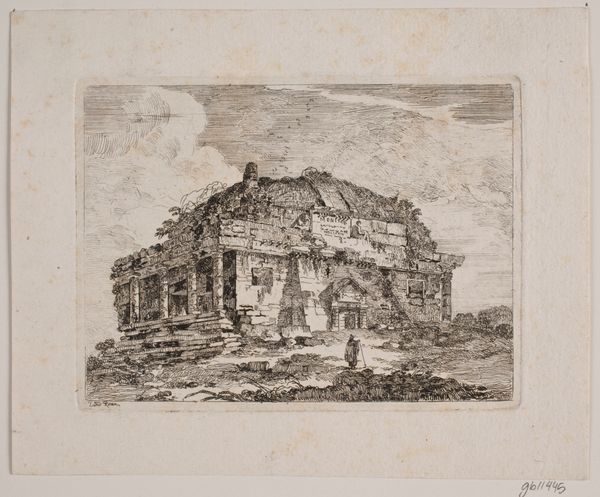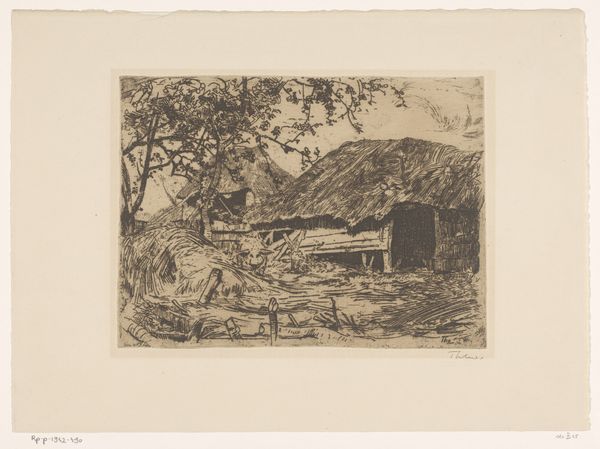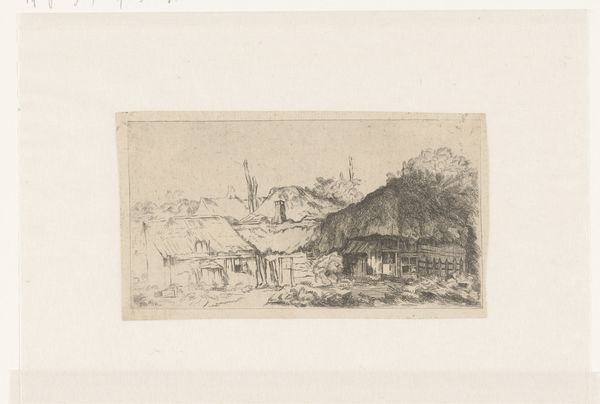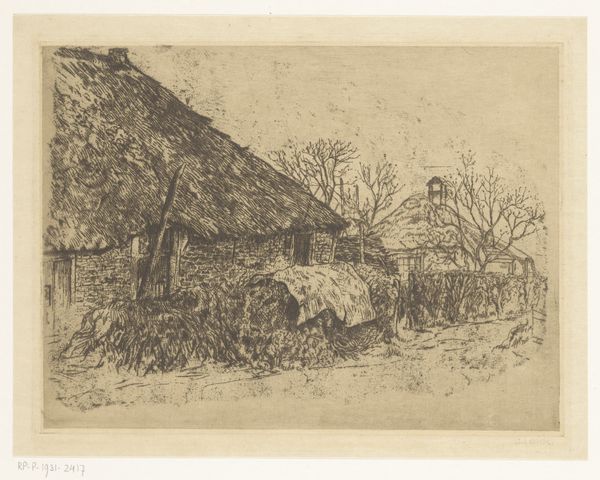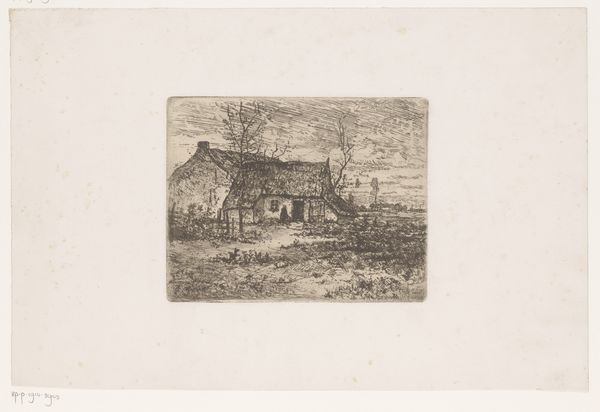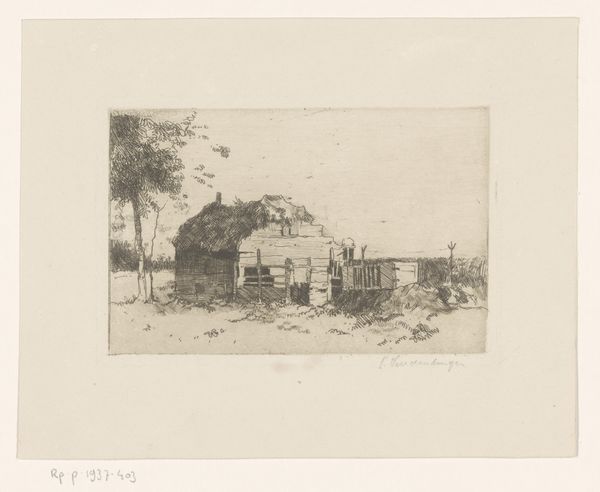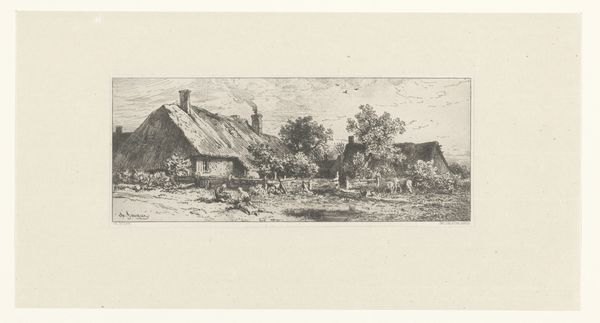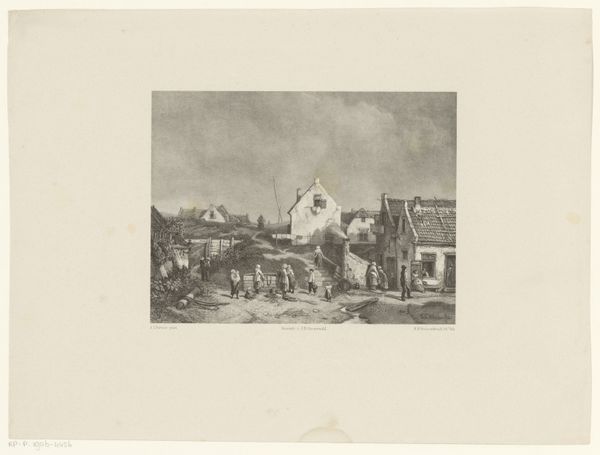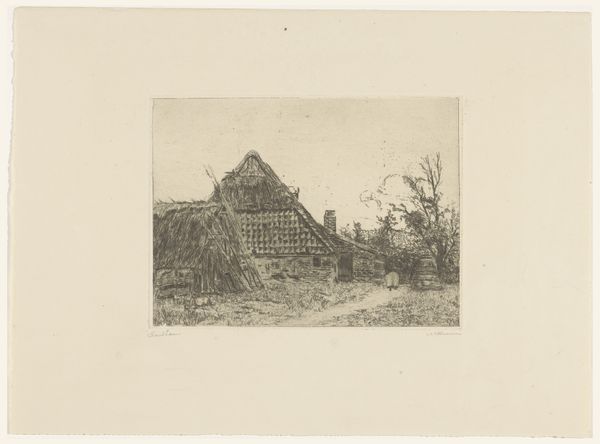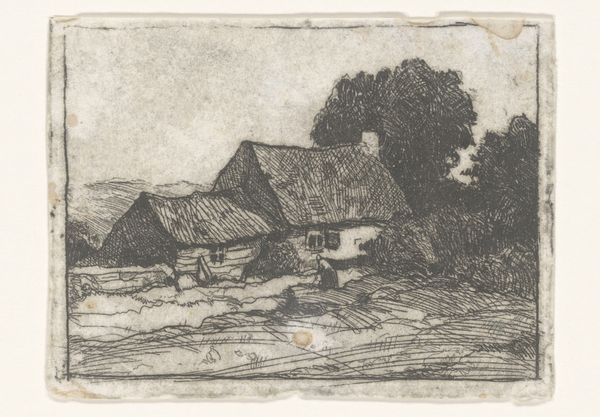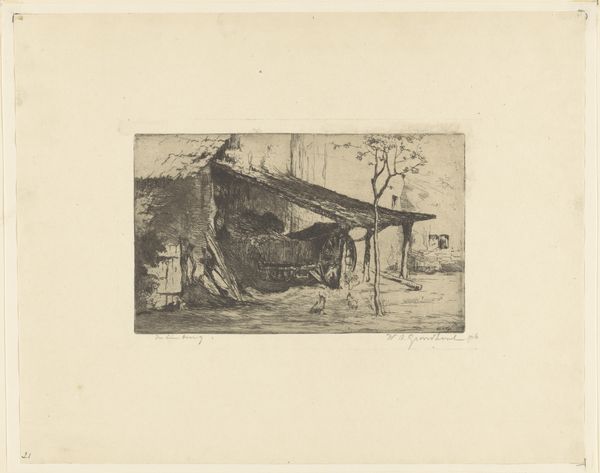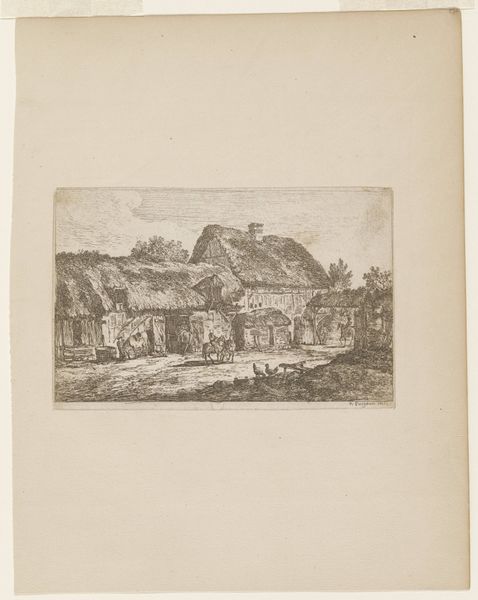
print, etching, paper
#
dutch-golden-age
# print
#
etching
#
landscape
#
paper
#
realism
Dimensions: height 129 mm, width 194 mm
Copyright: Rijks Museum: Open Domain
Editor: Here we have "Schuur bij Voorburg," a landscape by Willem Adrianus Grondhout, dating between 1888 and 1934. It's an etching on paper. There's a rustic, almost melancholic feel to the image created by the contrast and the close study of light within the linear detail. How do you read this composition? Curator: Observe the structural components closely. The artist's employment of etching generates an image abundant in minute detail and texture. Note how Grondhout delineates space and form by means of value; he makes use of these dark and light patterns to construct the thatched roof of the barn and also define spatial boundaries. Would you agree that this focus results in a unique sense of volume and tactility? Editor: Yes, especially the roof—you can almost feel the texture of the thatch. It is very realistic. It contrasts, I feel, with a kind of vagueness, an almost hurried sense of line in the building walls, that pulls your eye directly to it. Curator: Indeed. Observe how Grondhout manages to achieve an equilibrium between the more graphically elaborated details, such as the thatched roof, and areas where detail appears subdued, like within the flat field foreground. Note the relationship between this contrast and the balance of dark and light elements; could we view the building itself as operating as a focal element around which various pictorial forces intersect? Editor: It definitely makes the work more interesting! It's more than just a straightforward depiction of a barn; it's a complex interplay of textures and tonalities. I hadn't thought about it like that. Curator: Exactly. It becomes evident how critical visual analysis and a systematic methodology, while integrating both technical facets and underlying formal choices within a piece, enrich comprehension and appraisal.
Comments
No comments
Be the first to comment and join the conversation on the ultimate creative platform.
